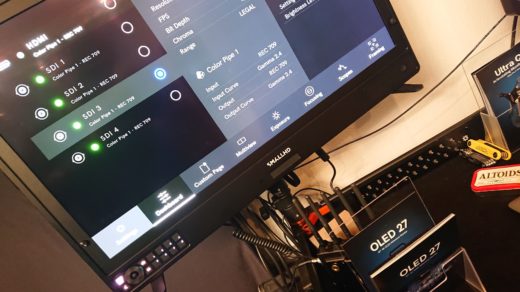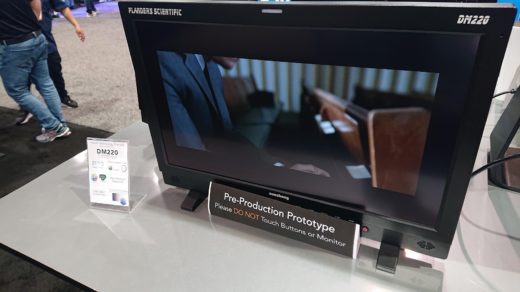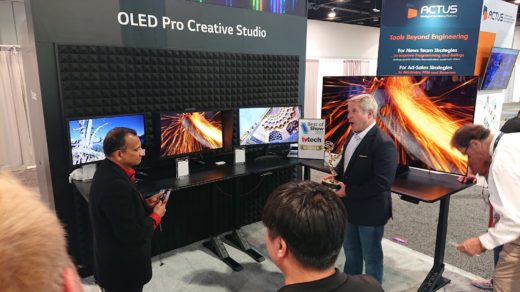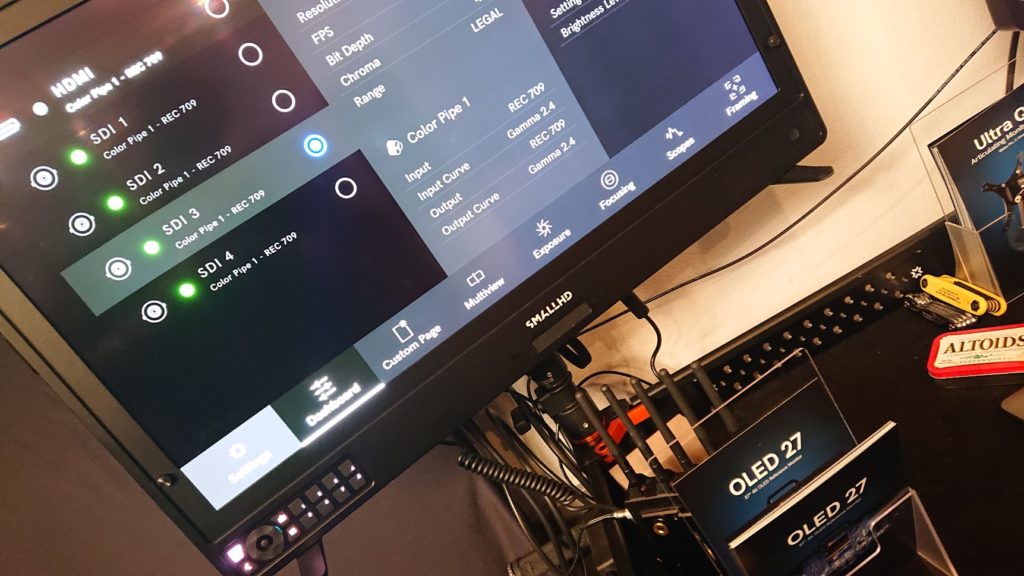
For a technology that seems to have hovered perpetually on the edge of universal acceptance for last decade or more, OLED displays are making a pretty significant showing at NAB 2022. In North Hall, Asus is showing the PA32DC which Jose told us about a couple of days ago, but that’s not all; LG has taken space at the show for the very first time with some almost directly competing desktop displays, including 36.5 and 21.5-inch models available in variants both with and without inbuilt calibration. LG’s larger 65-inch model is more obviously descended from its home TV displays, with RGB plus white subpixels.
But that’s still not all, because if we stroll a short distance across Central Hall, we discover Flanders Scientific and a version of its 22-inch display that’s so prototypical there are signs warning probing fingers not to monkey with the controls, lest things go horribly wrong. The image looked great, of course; the company tells us that its 31-inch true reference display (which is not an OLED) should emerge in time for Cine Gear next month. For the time being, though, that 22-inch display looks just exactly as wonderful as relatively compact 4K displays with really high contrast tend to.

We might speculate about the technological lineage between that 22-inch display and the one over in the room commandeered by Creative Solutions, the appendage of Vitec that encompasses Teradek, Wooden Camera and SmallHD. SmallHD’s 22-inch OLED is differentiated from Flanders’ 22-inch OLED mainly by SmallHD’s rather comprehensive firmware, which does a lot of things, though we can’t meaningfully compare them while Flanders is still finalising its code.
A lot of OLEDs
That’s a lot of OLED monitors from a lot of companies, although a really clear-eyed assessment of the market requires us to look at some of the factors surrounding these displays, and the situations in which they’re likely to be used. Sony’s highest-grade monitor, proudly taking pride of place on the company’s United Nations member of a booth at the show, is the BVM-HX310, and it is not an OLED display. Likewise, SmallHD now has sufficiently good precision reference displays that the company felt it worthwhile to display them in a blacked-out booth; some of the things on display were not OLEDs, and the problem is the same as it has always been: they’re not bright enough.

Or, at least, they’re not bright enough for some things. There are a lot of factors which affect how suitable a display might be for really high-end mastering work, but four-figure peak brightness numbers are likely to be one of those factors. OLED stubbornly refuses to get there, and it’s not for want of trying.
More players, more game
One of the upsides of this situation is that some more people are about to start making, or (going by Sony’s experience) trying to make high-end OLED display panels. To date, only two companies on the planet – LG and JOLED – have been capable of manufacturing panels for video displays after Sony threw in the towel. Now Samsung is getting into the game, and reportedly some Chinese manufacturers are quietly tooling up. With the required facilities reportedly representing an investment of some eight billion US dollars (a fact which comes from a monitor manufacturer which prefers to remain nameless), this clearly isn’t a market for the part-timer, though the fact that more than one entity is willing to make that kind of spend says a lot about the enthusiasm with which the technology is viewed.
Market conditions seem ripe for improvement, then, although it’ll be years at least before we see the fruits of current development efforts on the show floor in Las Vegas.

Filmtools
Filmmakers go-to destination for pre-production, production & post production equipment!
Shop Now













